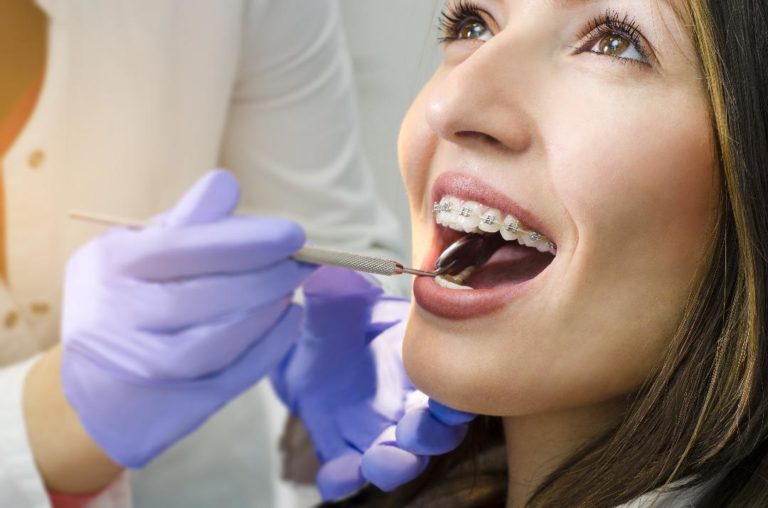7 reasons why you may need orthodontic work and how your dentist can help.
Blog:7 reasons why you may need orthodontic work and how your dentist can help.

Orthodontics is a form of dentistry that corrects issues with the alignment of the teeth and jaw. Chances are, you have met people who have undergone a form of orthodontic treatment. This could involve braces, Invisalign or other appliances. People often associate the aforementioned treatment methods with teenagers and children however treatment can take place at any stage of your life. The process could take a few months or many years of regular visits depending on your age and the severity of your misalignment. Most dentists undergo general orthodontic training and can perform common treatments and procedures. However, when serious cases arise dentists will refer their patients to an orthodontic specialist. Whether you feel self-conscious about your smile or you are experiencing discomfort due to misalignment bringing it up at your next dental or orthodontist appointment will be beneficial.

Here are 7 reasons why you may need orthodontic work and how your dentist can help.
1. DEEPBITE.
A deepbite occurs when the top front teeth overlap the lower front teeth excessively. A deepbite could be a result of improper jaw development from childhood to adulthood. Some patients experience painful lesions when the lower front teeth cut into the sensitive upper gum line behind the upper front teeth. There are many options for correcting deepbite. Your dentist will do an assessment that may help determine the best course of action. For children with growing jaws, the best option may be to get braces. For adults, it could be an appliance. Depending on the severity you could be referred to an orthodontic specialist.
2. FRONT OPENBITE.
A front openbite occurs when there is an opening between the front top and bottom teeth. This issue commonly arises due to thumb sicking while a child’s jaw is still developing. For adults, it could be a problem with jaw growth. For some patients, if the issue isn’t corrected they may develop problems with speech and swallowing. Your dentist may recommend an appliance to correct the jaw and children may be given a thumb brace to curb the thumb sucking habit.
3. CROSSBITE.
A crossbite occurs when one or more of your upper and lower teeth don’t line up. This could occur because the jaw didn’t line up during childhood. For some patients, crossbite may lead to the wearing down of the tooth enamel. Your dentist may assess the joints in your jaw and depending on your age an appliance may be recommended to expand or contract it. For older patients, braces might be used if the issue has gone too far.
4. UNDERBITE.
An underbite occurs when the upper front teeth are behind the bottom front teeth because the lower jaw grows faster than the upper jaw. This usually starts during childhood development and can be linked to genetics. For some patients, an underbite can cause unwanted stress on the jaw joints. A dentist will usually recommend braces and on rare occasions jaw surgery.
5. OVERJET.
Overjet occurs when the top teeth stick out because of thumb sucking or tongue trusting. Tongue thrusting is a habit that develops when the strong tongue muscle constantly pushes against the front teeth causing them to protrude. The protruding front teeth can make it difficult for some patients to close their mouths. This is one of the more difficult problems to correct because the rate of tongue thrusting relapse is high. Your dentist will recommend trying to curb the habits that are causing the overjet while you undergo treatment.
6. GAPS.
Gaps occur when there are spaces between the teeth. Gaps could be genetic or can it can be caused by missing teeth. For some patients, gaps could result in more food being stuck between the teeth resulting in more cavities. A dentist may recommend gum surgery then braces or clear aligners which work well for dispositioned teeth.
7. CROWDED OR OVERLAPPED TEETH.
This occurs when teeth grow out of alignment and grow overtop or underneath each other. Typically this issue can be linked to genetics. Patients with this issue often have small jaws resulting in insufficient space to house all of their teeth. Some patients, find it difficult to clean between the overlapped teeth which can lead to cavities. It is common to recommend braces possibly in combination with another appliance depending on the patient’s age.

Issues like overjet, openbite and gaps in the teeth are usually linked to habits like thumb sucking and tongue thrusting. These habits often start in childhood and can get worse over time if left untreated. If you or your child has developed any of these bite problems remember that it’s never too late or too early to share your concerns with your dentist.



